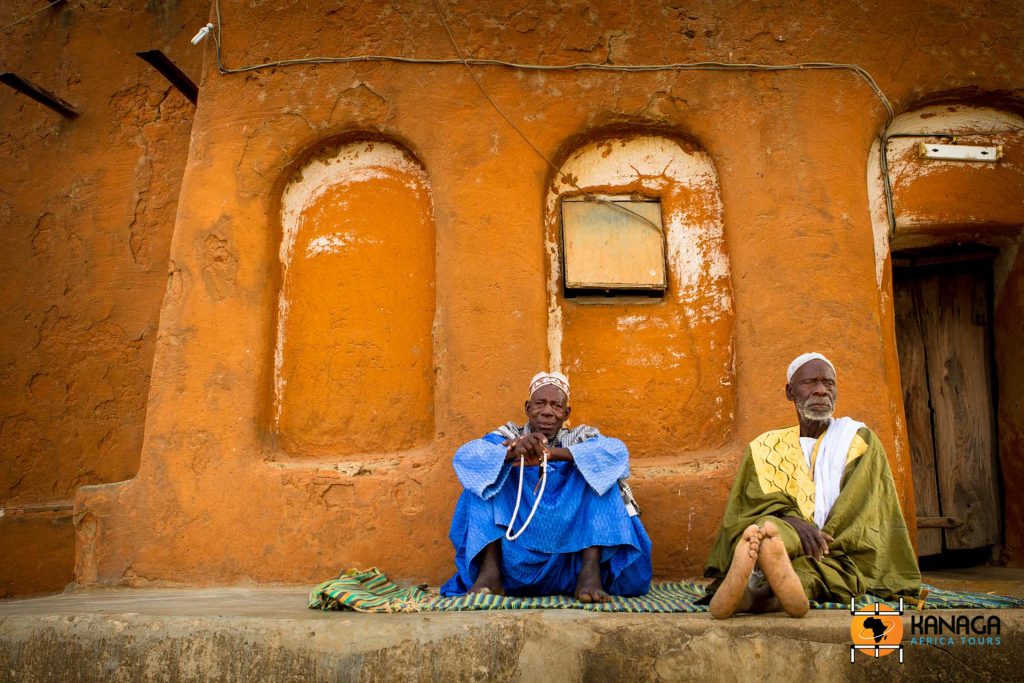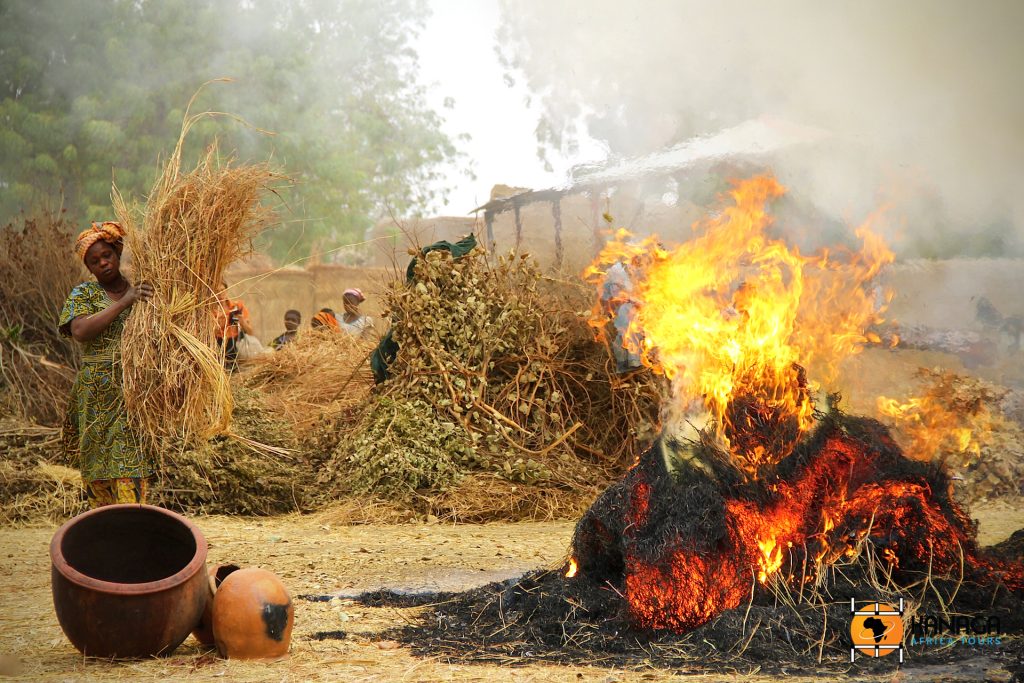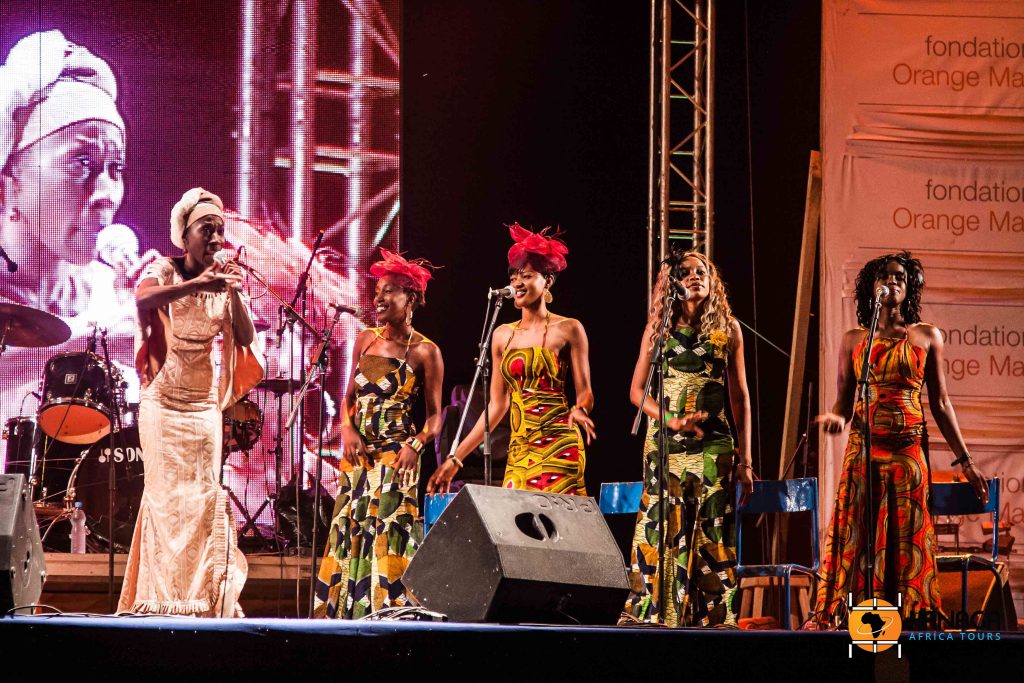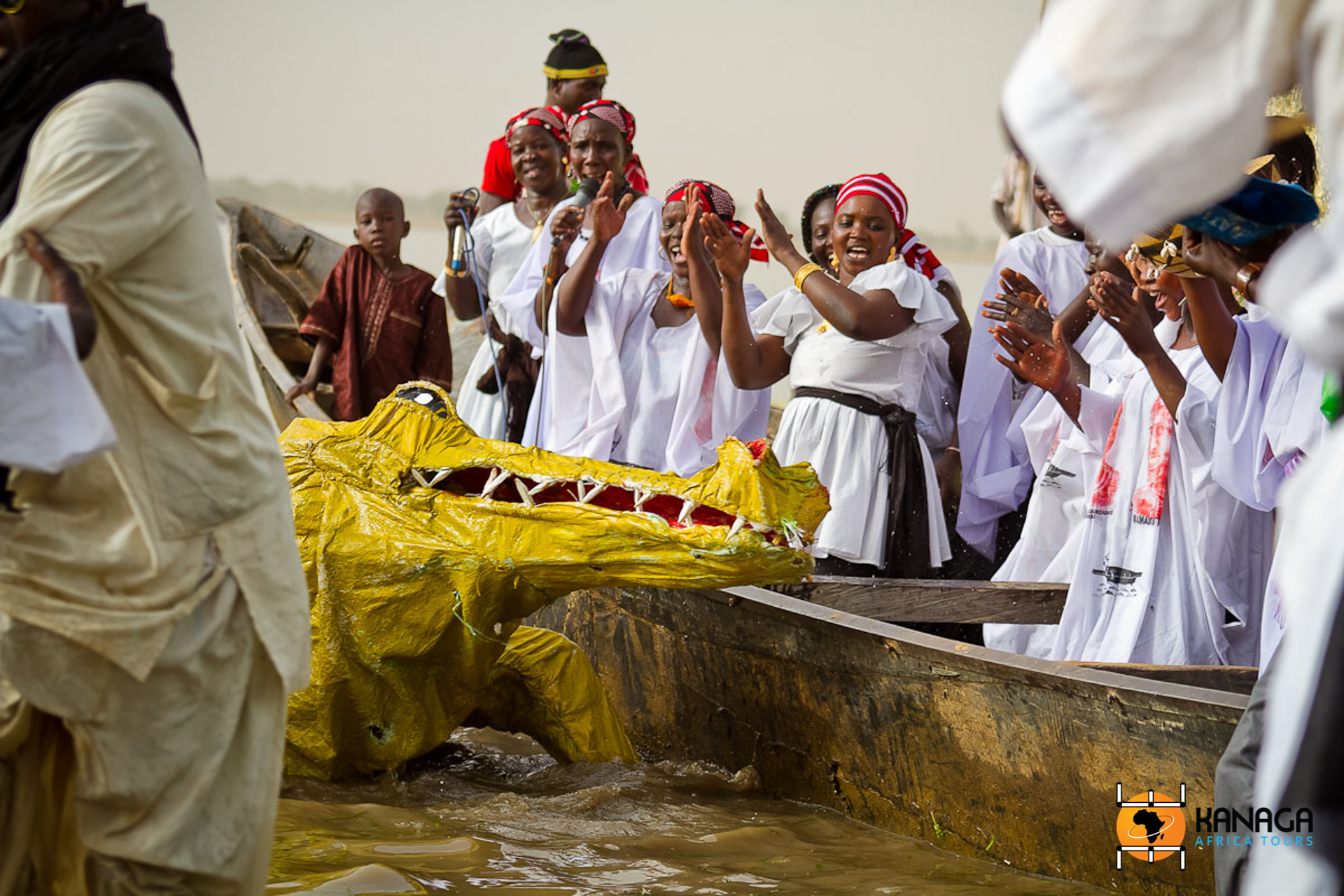© A. Pappone
On the peaceful banks of the Niger River, 250 km from Bamako, lies the colonial town of Segou, with its beautiful tree-lined avenues and relaxed atmosphere, the heart of Bambara culture. The historic settlement of Segoukoro, the old Segou, remains preserved in its original ancestral appearance, 18 km away, while its shady administrative quarters, dating from the late 19th century, are an interesting blend of neo-Sudanese and colonial styles.
Segoukoro, a small rural village, was the capital of the Bambara Kingdom of Segou and its two powerful dynasties, the Coulibaly and the Diarra, which ruled the region for almost two centuries, until the Toukouleur conquest of El Hadj Omar in 1861, who was in turn ousted by the arrival of the colonisers. The fact that the French respectfully decided to build their new capital 18 km away has meant that the history of this kingdom has been preserved and its characteristic architecture is still its clay casket today.
Entirely preserved in its original appearance is the beautiful Royal Palace of the first Biton ruler Mamary Coulibaly, who ruled until 1755, or the mosque, which he had built for his mother who converted to Islam. Biton’s remains still rest in the royal tomb, which can be visited in front of the palace. At Segoukoro, time seems to stand still, among the narrow alleyways that branch off around the court, among the facades full of niches and slits, modelled in red clay, with the typical intense colour of Segou’s sand. What magic in a ray of sunlight that illuminates the theory of pillars and the subdivisions of the interior spaces of the palace, where everything has remained as it once was!
The French administrators, faced with such traditional architectural beauty and the skilful use of local materials such as clay, wood and straw, could only draw inspiration from it for the new buildings of the colonial capital in an exquisitely local neo-Sudanese style. Conceived on large tree-lined boulevards during the second half of the 19th century, the “new Segou” became the main river port, around which the new colonial economy revolved.
The administrative buildings, now marked by a fascinating decadence, stand slightly back from the river, while along the banks there is a concentration of the most characteristic traditional clay architecture, as well as the craft activities of the historic local workers. In a small wooden pirogue, you can discover the rural traditions that have remained intact along the river villages, including the picturesque comings and goings of the Bozo fishermen, the metalworking workshops or for the production of splendid terracotta objects, made by the local women’s cooperative kilns, according to the ancient know-how of community baking in the village of Kalabougou.
Clay has a very special significance in Segou and is used in many fields, from building construction and craftwork to the characteristic dyeing of textiles. It is in the Segou region that legend has it that the ancient technique of “bogolan” was born, the complex process of pigmenting cotton with clay ochre and macerated plants. Even today, these secrets, used in ancient times by the Bambara warrior and hunter caste, are still handed down by expert craftsmen, who make beautiful fabrics by hand, with their typical black and brown geometric patterns.
But Segou is also the home of puppets and masks. Among the theory of small ateliers and antique dealers, it is possible to find unique pieces of masks dating back to the Bambara tradition, or the characteristic “wooden fish” of the Bozo, a kind of brightly coloured aquatic puppet that was used during propitiatory ceremonies linked to the cyclical nature of fishing.
Every year in February, the city of Segou perpetuates the renowned Festival on the Niger, a high-level cultural event promoting and enhancing the rich regional heritage. With performances and concerts by the country’s greatest musicians, international guests, art and craft exhibitions, culinary stands, bogolan dyeing initiation workshops, conferences and puppet and traditional dance shows, the Festival attracts thousands of onlookers from all over the world every year, in a full immersion in the Malian cultural scene, amidst the frenzied rhythms of the djembé, kora and balafon, which resound in front of the marvellous river scenery.







